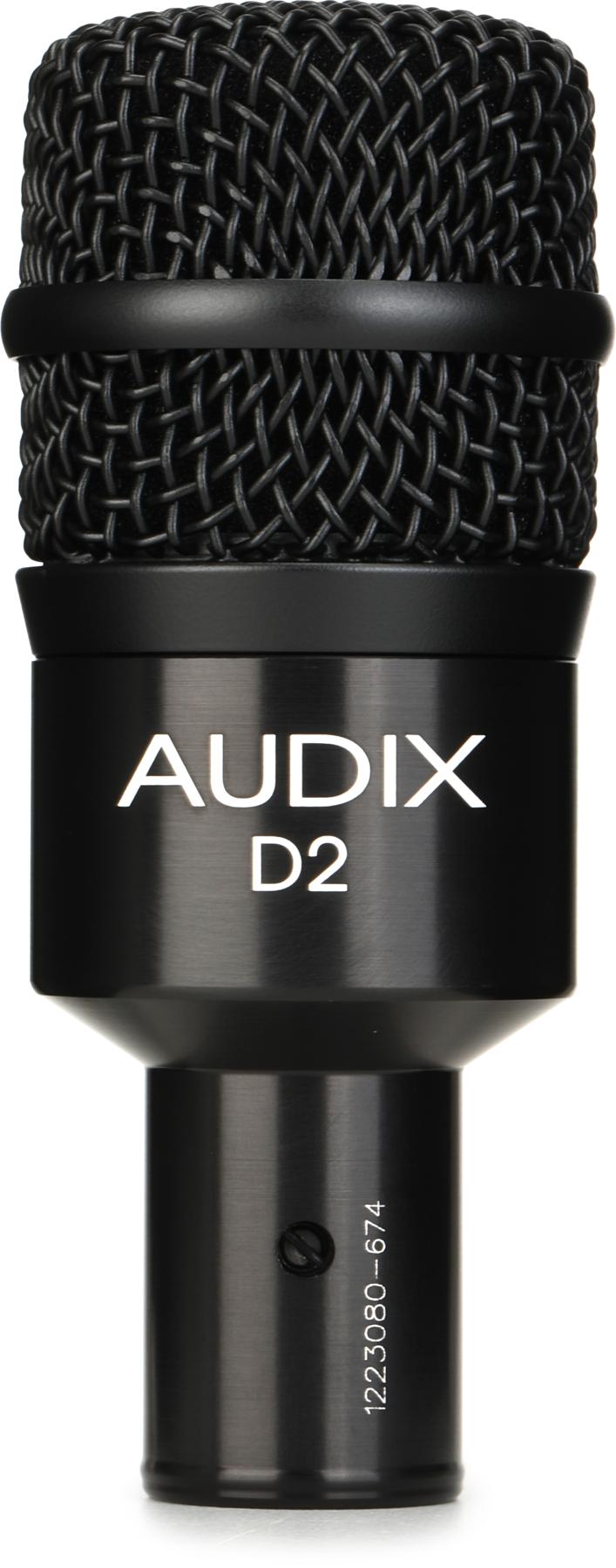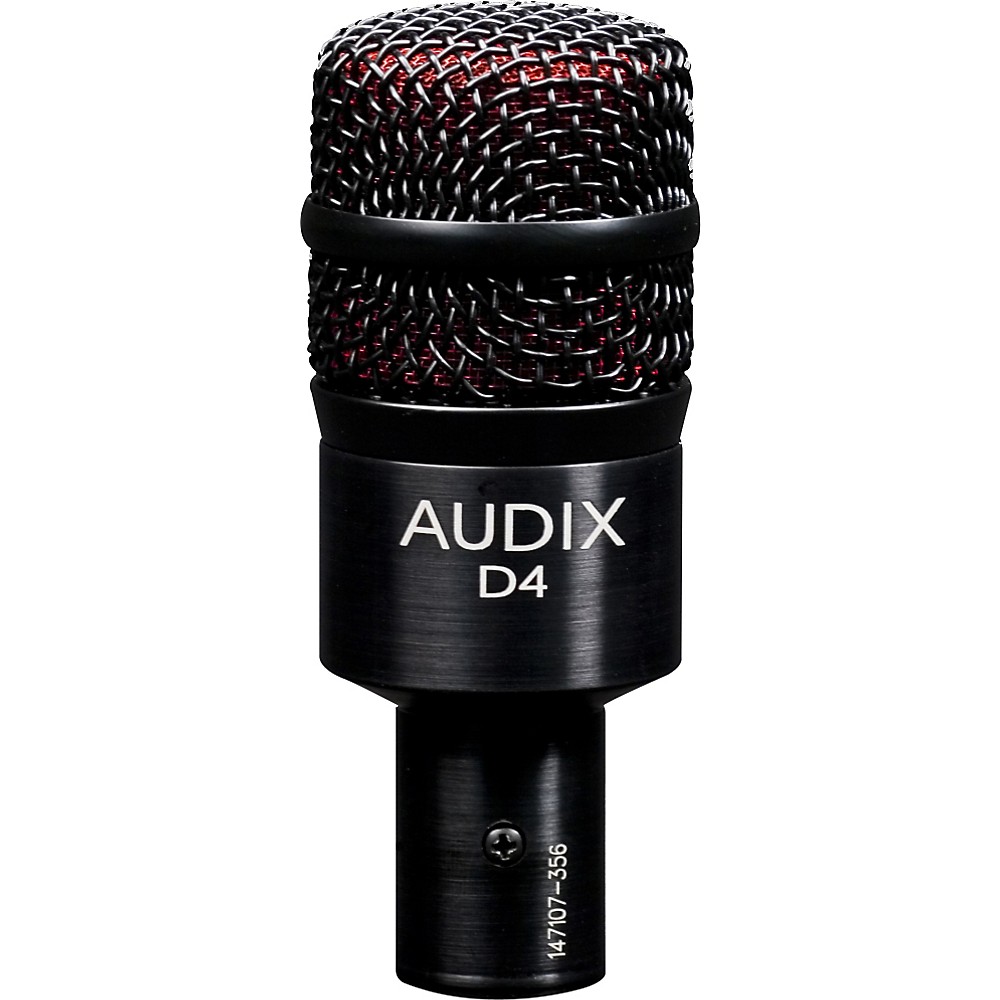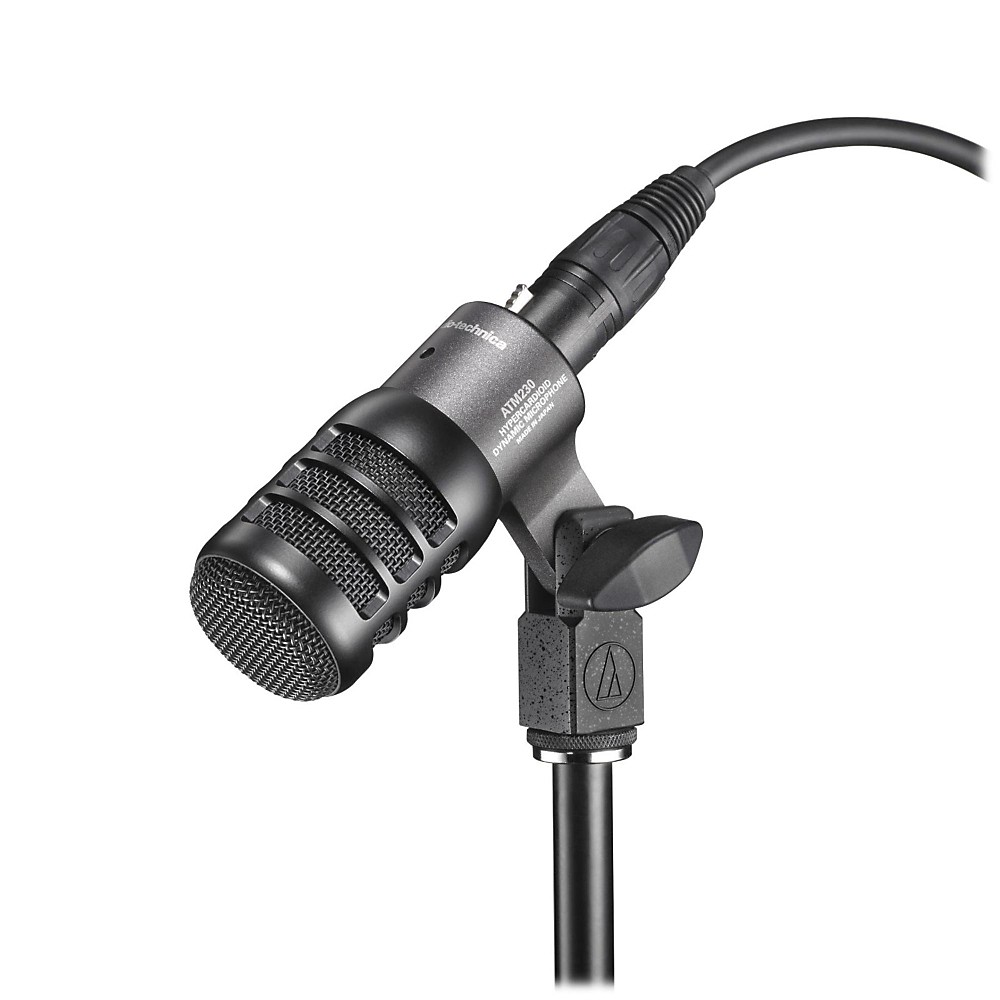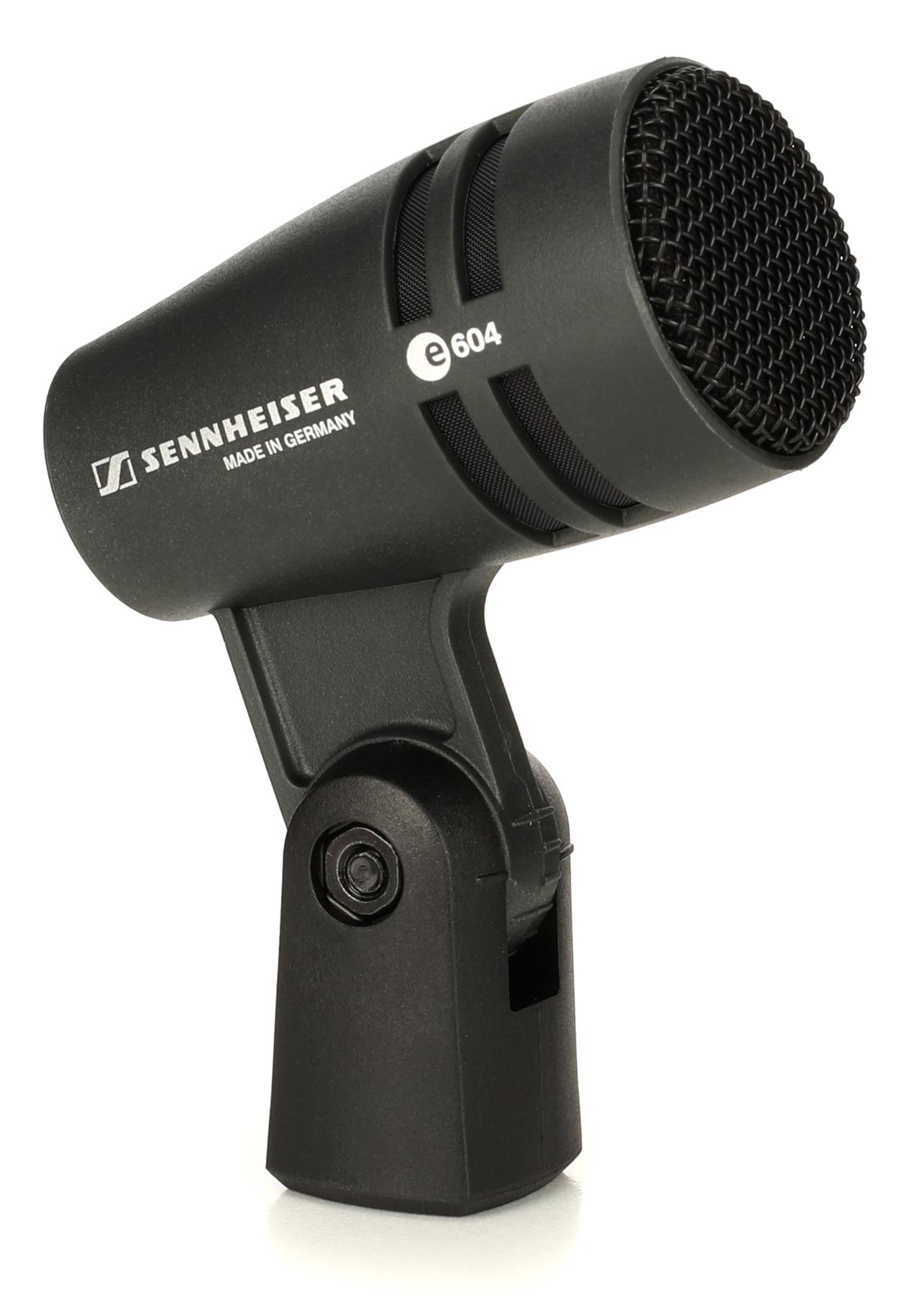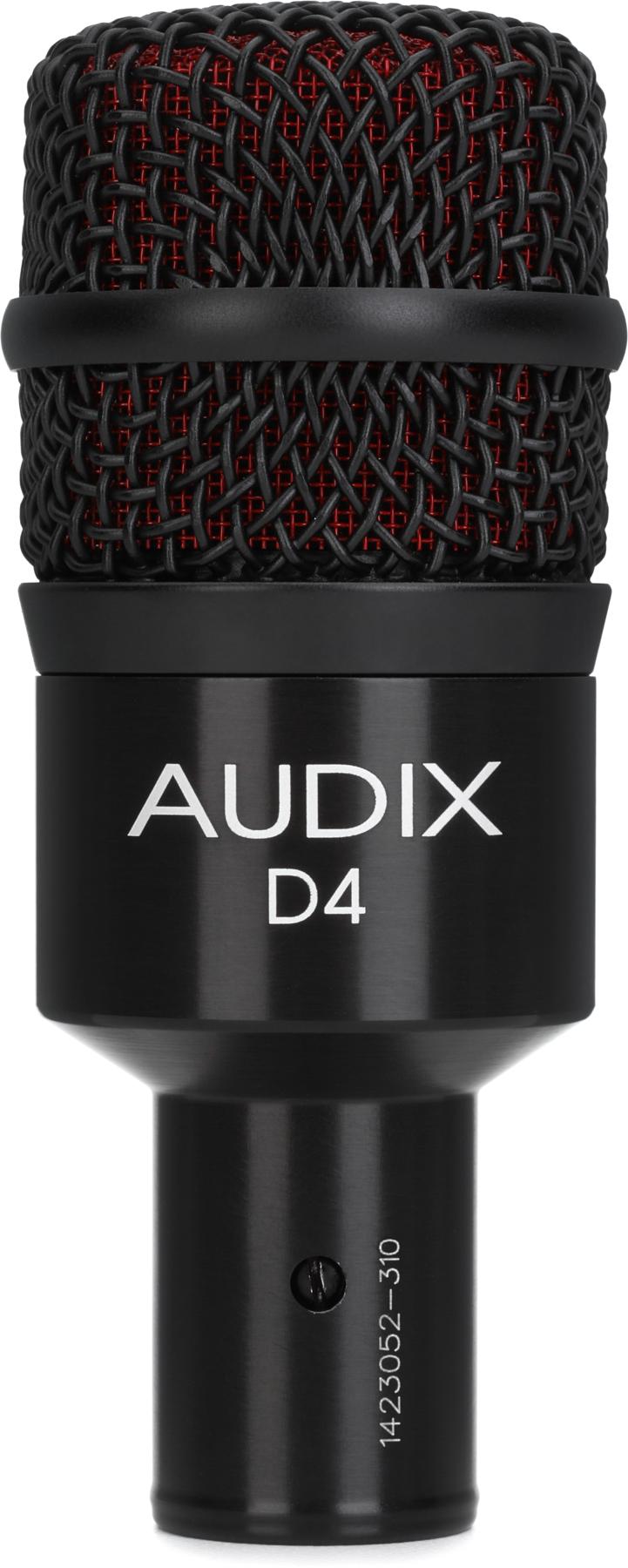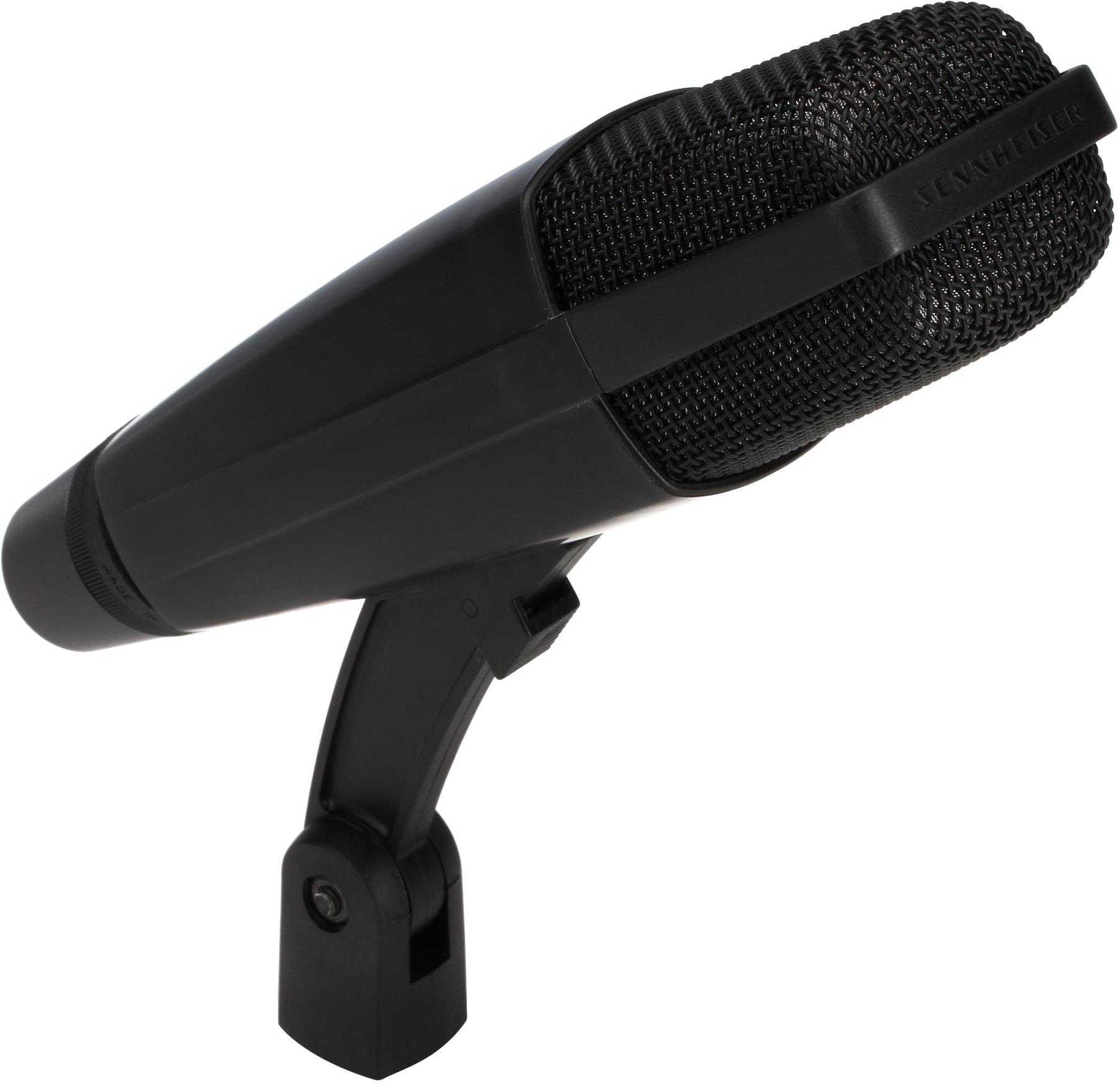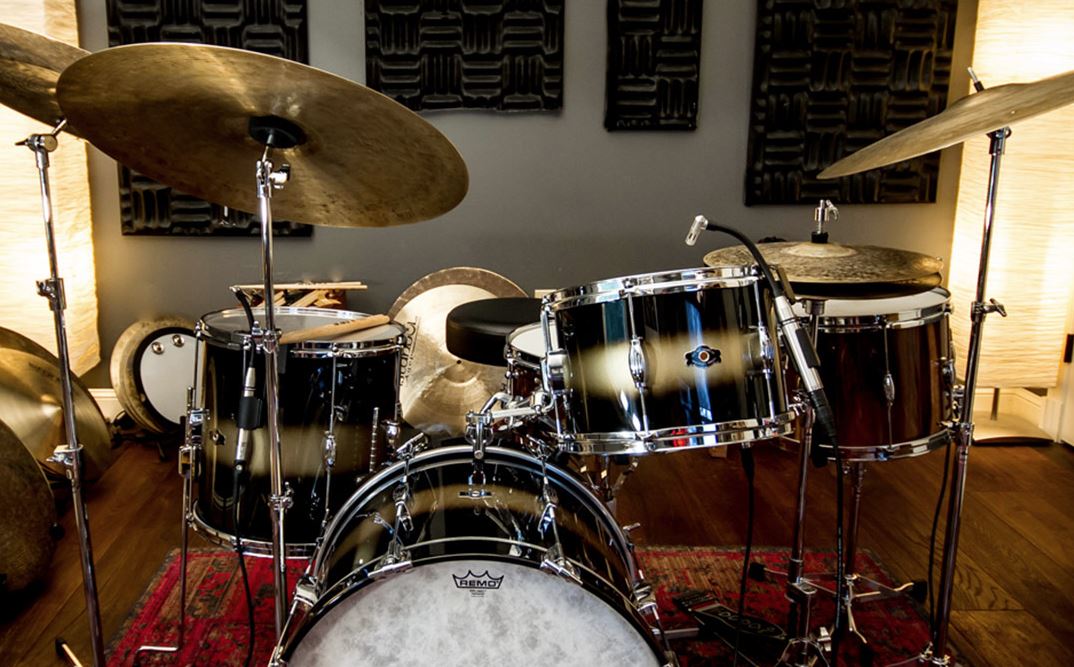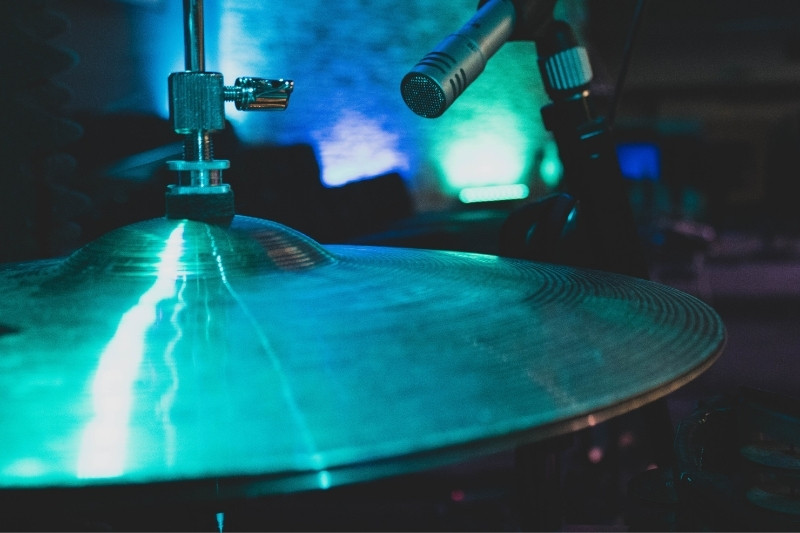The 7 Best Tom Mics (2024)
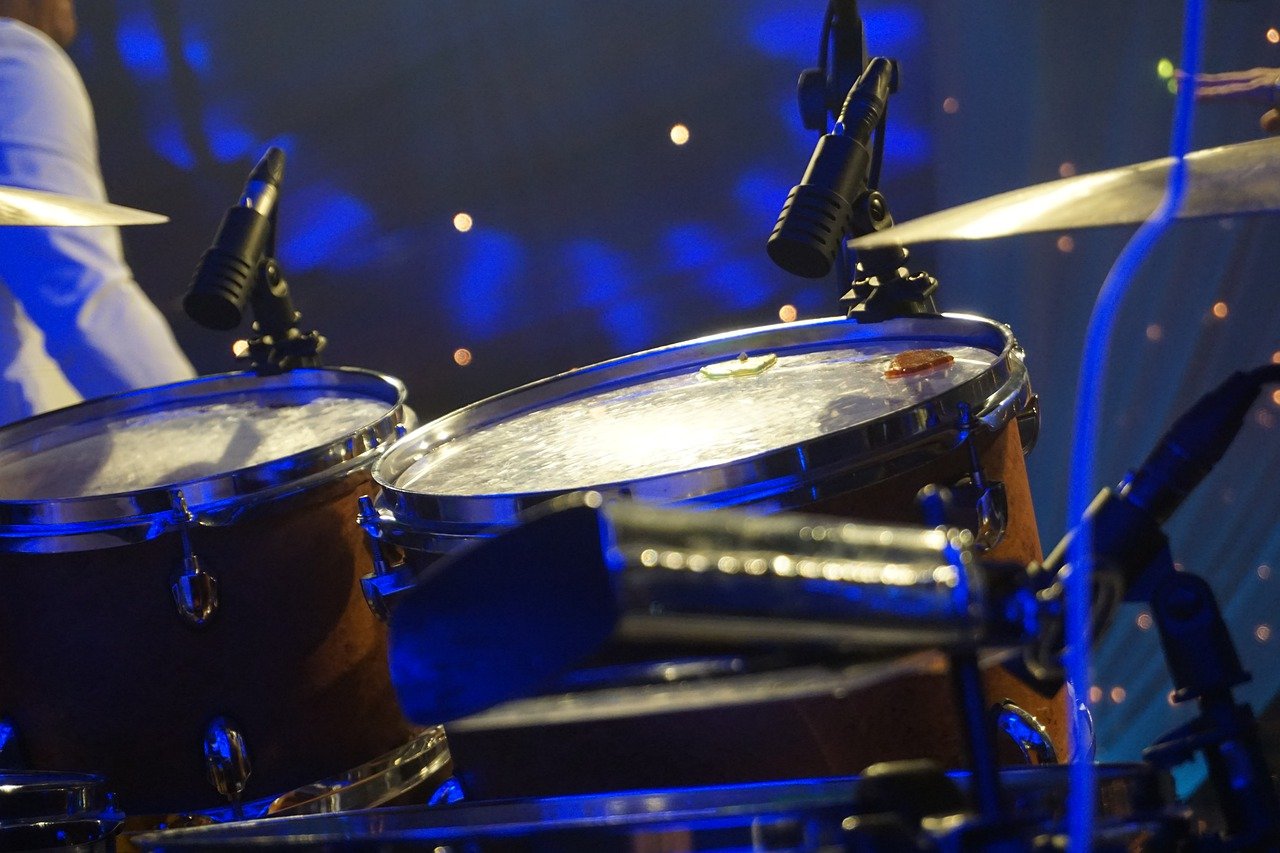
You need a specific type of microphone to properly capture the sound from your tom drums. There are many mics made specifically for this purpose. Also, easily mountable tom mics can make things easier during setup.
My top recommended tom mic is the Audix D2, due to its warm sound reproduction and low impedance.
My second recommended tom mic is the Shure SM 57, an incredibly popular, affordable, and versatile microphone for drums.
Contents
- The 7 Best Tom Mics (2024)
- 1. Audix D2
- 2. Shure SM 57
- 3. Audix D4
- 4. AKG C414 XLII
- 5. Sennheiser MD 421-II
- 6. Audio-Technica ATM230
- 7. Sennheiser E604
- Understanding Tom Microphones
- Setting Up Mics on Toms
- Do You Even Need Mics for Each Tom?
- Tune Your Drums Properly
- What to Look for When Choosing a Tom Mic
- Conclusion
The 7 Best Tom Mics (2024)
Let’s compare these in more detail.
1. Audix D2
This is a fairly sought-after mic by drummers as few mics give the natural, interference-free sound quality like the Audix D2. It is particularly great for rack toms as its hypercardioid pickup pattern isolates the tune of the drums.
Pros
- Clear, punchy sound
- Designed specifically for toms
- Small dimensions, easily portable
Cons
- Not that well suited to lower frequency sounds, e.g., floor toms
Rack toms produce a unique low-pitched sound but a higher frequency than the kick drum or floor tom. To get the best sound out of them, you need a mic that compliments them. This is where Audix D2 mics show their true color.
It has a compact design, making it easy to move. It also has a scratch-resistant spring steel grille to add to its durability.
| Transducer type | Dynamic |
| Max SPL | 144 dB |
| Power requirements | None |
| Frequency Bandwidth | 68-18,000 Hz |
Even though it may not have an array of applications as compared to other mics, the D2 is a master of its trade that is bringing the sound of rack toms to life.
2. Shure SM 57
The Shure SM 57 is exceptional for close quarters all the while maintaining a reputation for its toughness. I mean, butterfingers, constant bumps, or long life, it really can withstand it all!
Pros
- Very popular among sound engineers
- Excellent gain before feedback
- Constructed for the harshest conditions
- High-frequency tolerance
- Affordable
Cons
- Almost none for the price
This is one of the most popular and versatile microphones ever made. If you’ve ever made your way onto a stage or into a recording studio, you’ve probably seen an SM57 mic somewhere.
The SM-57 can easily detect extreme sound levels on the higher end of the spectrum. What results is a lack of distortion. Another commendable quality of these mics is the cardioid polar pattern minimizing the background noise.
| Transducer type | Dynamic |
| Max SPL | 190 dB |
| Power requirements | None |
| Frequency Bandwidth | 40-15,000 Hz |
Over decades as a staple in a musician’s life, the Shure SM 57 has rightfully earned its stripes. It’s a complete package especially if you are just starting out and don’t want to empty your pockets.
3. Audix D4
The Audix D4 is very similar to the previously mentioned D2 microphone, but the D4 is much more suited to floor toms due to it being better suited for deeper sounds.
Pros
- Brilliant low-end capture
- Value for money
- Small dimensions, easily portable
- Also suitable for bass drums and bass guitar
Cons
- Rather small for larger drum gear like a kick drum
The Audix D4 has a hyper-cardioid pattern. The microphone captures an isolated sound and gives you feedback control with high gains. It is great for handling high SPL levels without distorting which is a problem for most mics.
Boasting small dimensions, the D4 is a very mobile microphone. Its construction makes it easy to install and carry. This battery-powered mic is lightweight and super convenient.
| Transducer type | Dynamic |
| Max SPL | 144 dB |
| Power requirements | None |
| Frequency Bandwidth | 40-18,000 Hz |
The Audix D4 is made for the specific purpose of capturing the deep sounds of percussion. As expected, it does its job really well.
4. AKG C414 XLII
There is a reason this microphone has been used by some of the greatest musicians of all time. The AKG C414 XLII captures incredible sounds for every occasion. It’s a great option to use when recording toms in the studio.
Pros
- Amazing sound quality
- Variety of control features
- Warns of peak overload
- Nine polar patterns to choose from
- An incredibly versatile mic
Cons
- Pricey
- It’s a condenser mic, so more fragile than dynamic mics and requires phantom power
You can switch between 5 primary polar patterns – Omnidirectional, Cardioid, Wide-Cardioid, Hypercardioid, Figure-8, and 4 hybrid polar patterns. It also has an LED light to indicate the current pattern of the mic. A feature unlike any other.
The versatility of this mic is impeccable, it’s suitable for any musical situation and it is fairly simple to use, making it the ideal choice for many.
| Transducer type | Condenser |
| Max SPL | 140 dB |
| Power requirements | 448C phantom power |
| Frequency Bandwidth | 20-20,000 Hz |
If you have the budget, you really can’t go wrong with the AKG C414 XLII. Keep in mind that this is a pricey and fragile mic so you should take good care of it.
5. Sennheiser MD 421-II
Sennheiser’s MD 421-II has been a popular choice as a tom mic. The feedback rejection of the mic and bass roll-off isolates the sound of the toms and reproduces it in its natural tendency. This makes it ideal for both studio and live performances.
Pros
- Five-position bass roll-off for isolation
- Great feedback control
- Can tolerate high-pressure levels
Cons
- No that easy to position next to toms (in comparison to the E604)
- A bit pricey
The MD421-II is one of those mics that’s handy to have for many different recording situations. Although it’s a bit pricey, it offers quite a lot of versatility that you won’t get from purpose-built tom mics.
The mic features a 5-stage bass switch that is the shining star behind the mic’s versatility. Plus, the design is incredibly eye-pleasing.
| Transducer type | Dynamic |
| Max SPL | 150 dB |
| Power requirements | None |
| Frequency Bandwidth | 30-17,000 Hz |
Sennheiser MD421-II stays true to its reputation and produces incredible sound. Despite the price range, it is a nice microphone to have in the studio and on stage.
6. Audio-Technica ATM230
This is another mic that is specifically made for drums. You can put it on your rack toms or floor tom and the ATM230 will give you a good response.
Pros
- Handles very high SPL without fault
- Isolated sound
- Unique earth magnet improves sound quality
- Closer to the tom
Cons
- Not a well-rounded mic
- Quite heavy for a clip-on mic
It’s a compact mic that can be clipped on the rim, so it’s a good one to sneak on stage. Also, it has a rugged, all-metal body, so you can expect heavy-duty use without worrying about damage.
Since this mic is made for drums, it handles high SPL levels with ease. Not only that, its low-end reception is phenomenal as well.
| Transducer type | Dynamic |
| Max SPL | 140 dB |
| Power requirements | None |
| Frequency Bandwidth | 30-12,000 Hz |
The ATM230 works with the hyper-cardioid polar pattern, which isolates the intended sound and controls feedback on par with the best mics in town.
7. Sennheiser E604
The Sennheiser E604 is an easy-to-use mic with a very handy clip-on mount. This mic can be attached to the rim so that it stays close to the action. It has very decent sound quality and it’s a popular tom mic for this reason.
Pros
- Great performance at an affordable price
- Very high SPL handling without distortion
- Easy to position
Cons
- Lower performance than other higher-end mics
- Lacks versatility
Once you clip it and tighten the screws, you won’t have to worry about it falling off! The E604 picks up both high and low-end frequencies beautifully. Being near the tom head, it delivers great sustain and attack, exactly as the tom intends.
This is a low-noise microphone with an integrated tripod mount with a simple and easy-to-use design. The affordability adds that much more value to the product.
| Transducer type | Dynamic |
| SPL | 160 dB |
| Power requirements | None |
| Frequency Bandwidth | 40-18,000 Hz |
Sennheiser is an established name in the audio industry. If you want a reliable tom mic without spending a fortune, then you should look into the E604.
Understanding Tom Microphones
It’s important to understand what makes a good tom microphone. These mics need to handle high sound pressure levels (SPLs) as drums are loud. They should also have a good frequency response to accurately capture the tonal characteristics of the toms. A robust build quality is also essential because, as we know, drums can be a hazardous place for microphones.
Setting Up Mics on Toms
Clip-on or mounted stand, it’s really up to your personal preference on how you want to mic your toms.
If you place your cymbals higher, then a stand works just fine. No hindrance in the kit and no high-frequency noise either. However, if you do place your cymbals closer or even want to hide your mics during a live show, stick with clipping the mic onto the rim.
Here’s a video to demonstrate the process:
Do You Even Need Mics for Each Tom?
There are many different approaches to miking drums. You don’t necessarily need to mic every drum but it gives you the most versatility.
Some sound engineers ditch miking up individual drums altogether and just go for an overhead mic setup. For more information, check out our guide on how to record drums.
Tune Your Drums Properly
No amount of high-end professional studio equipment can make your kit sound good if it is not tuned well. Honestly, your first step should be to learn how to tune according to the music you are playing. Get in touch with your instrument. There are plenty of guides online to help with this. A drum tuner can also help you along the way, but they’re not a perfect solution.
What to Look for When Choosing a Tom Mic
Sound Quality
The most important aspect to consider is the sound quality of the microphone. The microphone should be able to accurately capture the unique tone of your toms. Both Audix D2 and Shure SM57 are well-regarded for their sound reproduction quality.
Durability
Given the high sound pressure levels produced by a drum kit, durability is a key factor. Your chosen drum microphones should be robust enough to withstand a live gig or an intense recording session.
Price
Price matters, but remember – you often get what you pay for. Depending on your budget, you may have to decide between a higher-priced mic or a more affordable option. Choosing a set of drum mics (a drum mic kit) might be a good option too.
Versatility
A versatile microphone like the Shure SM57 can be used on various parts of a drum kit, including the snare drum and toms, and can also be used on vocals and guitar amps. On the other hand, the Audix D2 is more specialized.
Mic Placement
Consider the mic’s design and how it will fit into your drum kit setup. Will it be easy to place it where you want it? A poorly placed mic can negatively affect your drum sound.
Conclusion
At first, buying recording gear can be a tentative decision. Setting it up, even more so. So, keep in mind that you don’t have to be a professional sound engineer to be good at this. All it takes is a good ear and some experience to develop this skill.
Any of the tom mics mentioned in this list will do a fine job of capturing the sound. The differences between each are quite subjective and no matter the choice, they are all particularly well suited for tom drums.
My top pick is the Audix D2, a great mic with warm sound reproduction and low impedance.
My budget pick is the Shure SM 57, an incredibly popular, budget-friendly, and versatile mic for drums.

